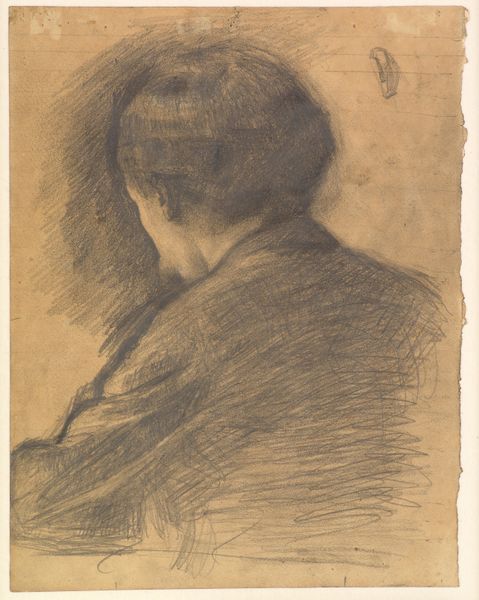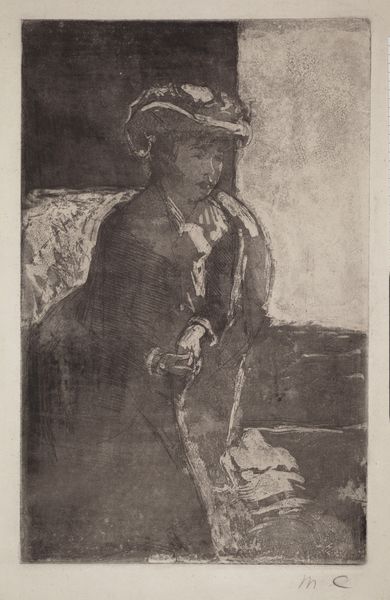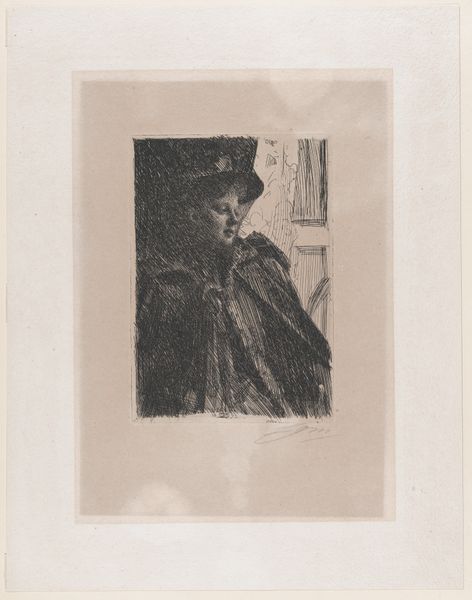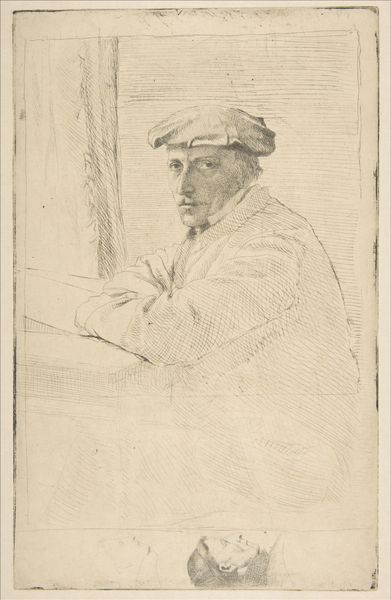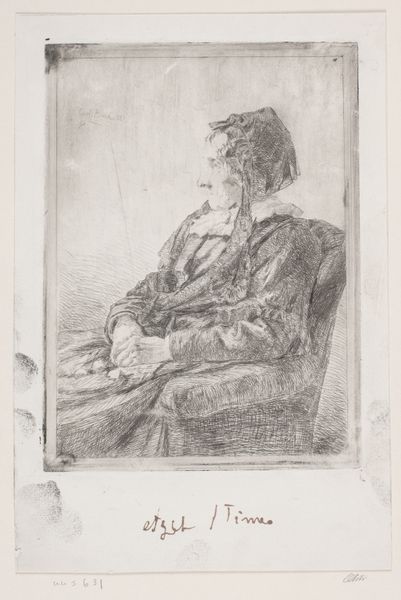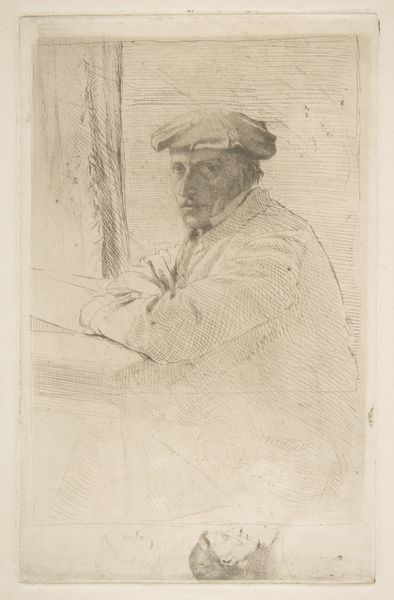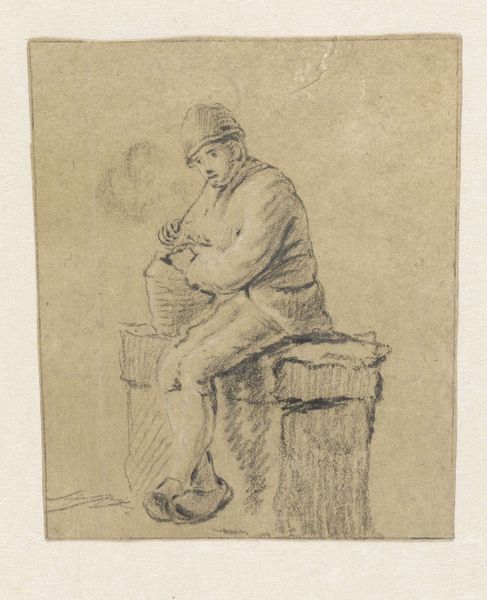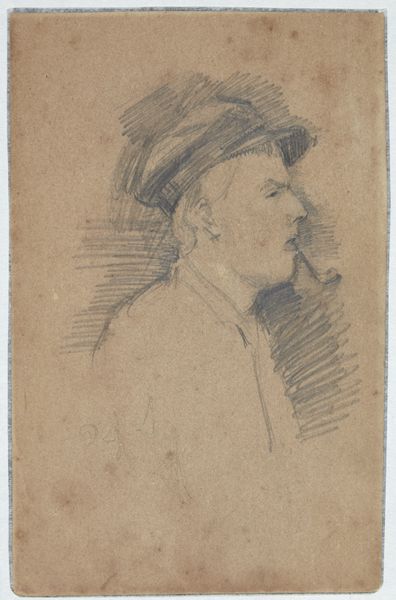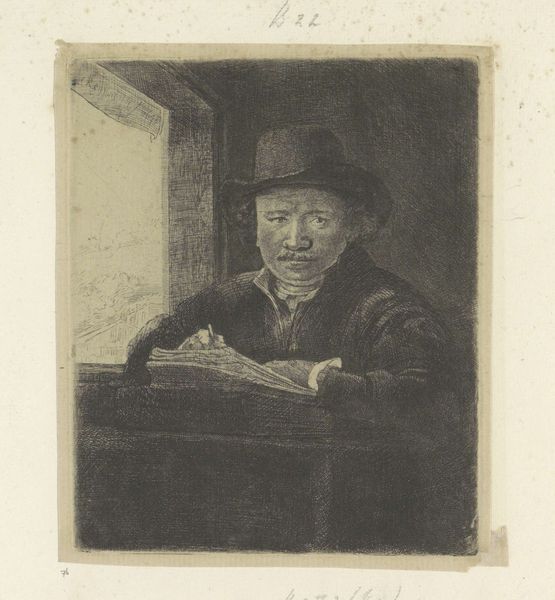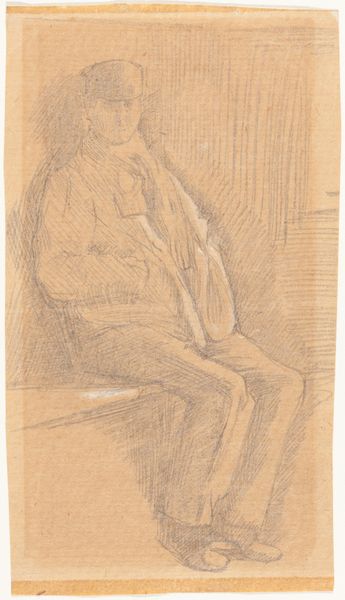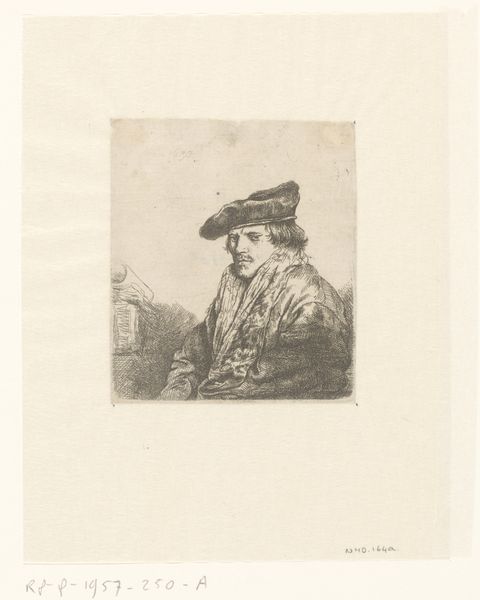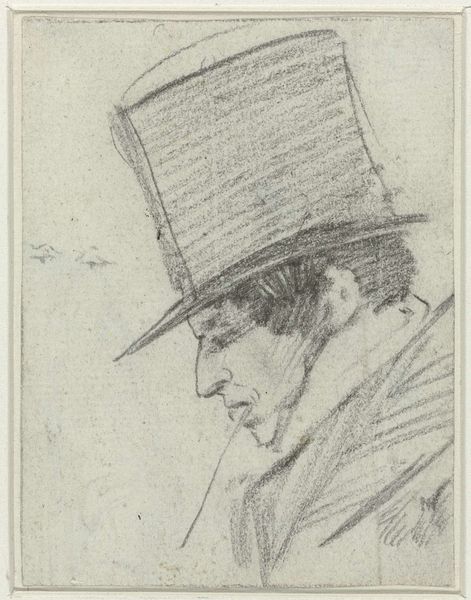
drawing, print, etching, engraving
#
portrait
#
drawing
# print
#
impressionism
#
etching
#
men
#
engraving
Dimensions: plate: 9 1/16 x 5 11/16 in. (23 x 14.4 cm) sheet: 18 15/16 x 13 13/16 in. (48.1 x 35.1 cm)
Copyright: Public Domain
Curator: This etching by Edgar Degas, realized between 1857 and 1869, offers an intimate portrayal of the engraver Joseph Tourny. It’s currently part of the collection at the Metropolitan Museum of Art. What’s your initial impression? Editor: There's a real sense of introspection here. The blurring in the image contributes to this very thoughtful and quite meditative impression. The darks and lights make the piece very heavy, though. Do you find yourself sympathizing with Tourny's supposed thoughtfulness? Curator: I think the blurring you mention comes from Degas' experimental approach to etching at this time. He wasn't aiming for photorealistic precision. In fact, the very medium of printmaking at the time was fraught with issues of democratization. Who has access to art, and who decides what that art should look like? To answer your question though, as for sympathy, I'm struck more by the depiction of the *labor* of creation. His position, the slight slump, it tells a story. Editor: Definitely. He looks weighted, like his labor is weighing on him. Also, knowing what printmaking entailed… It's such an intentional artistic declaration to portray someone doing that kind of work, and doing it that way. This is hardly the heroic posture we usually see in portraits. It makes you wonder what Degas was intending by rendering it as he did. Do you read anything specific into his gaze? Curator: Degas had a documented interest in portraying individuals from various social strata in unidealized terms, remember. I wouldn't hang too much onto his gaze - or lack thereof. Tourny’s slightly unfocused look adds to the everyday feeling. Editor: Right, the opposite of idealization – Degas does allow us a brief glimpse into this craftsman's world. Perhaps this offers a silent but very powerful commentary on artistic labour, a counterpoint to more traditionally celebrated, glorified depictions of artistic figures. Curator: Absolutely. Degas is engaging with and challenging established norms about who and what is worthy of artistic representation. The focus is less on the individual's genius, and more on the quiet, sustained effort of creation. Editor: It's refreshing to see a portrayal that complicates the art-making mythos in this way. Makes me consider the impact of institutionalized artistic narratives on how we value certain forms of labour and expression over others. Curator: An excellent point. Art is almost always a social construct and Degas helps us interrogate it in unique ways.
Comments
No comments
Be the first to comment and join the conversation on the ultimate creative platform.
